Birkenhead Corporation Tramways, No. 20
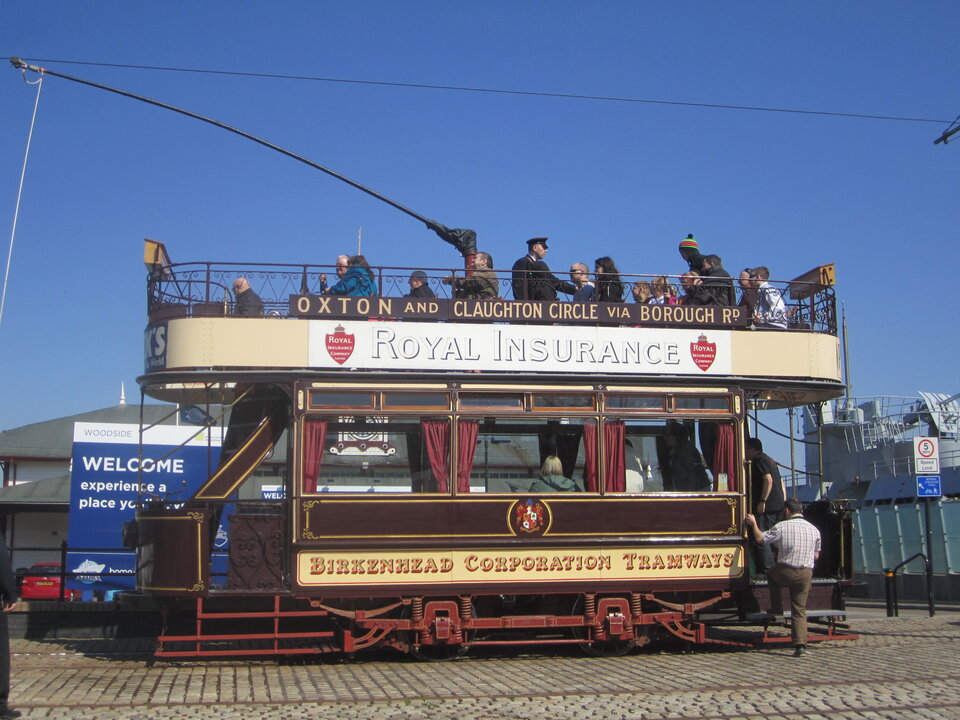
Birkenhead 20 at the Woodside Ferry on 18th April 2015. Photograph: Jim Dignan

Birkenhead 20 at the Woodside Ferry on 18th April 2015. Photograph: Jim Dignan
Birkenhead occupies a unique place in the history of British street tramways, as the site of pioneering American entrepreneur George Francis Train’s first horse tram venture, which began operating on 30th August 1860. Four years later, Birkenhead became the first local authority in Britain to own a tramway, though the service was initially operated by the Birkenhead Street Railway Company. However, Birkenhead Corporation subsequently took full control of the tramway, including the 1.5 mile line from Woodside Ferry to Birkenhead Park, which was electrified in 1901.
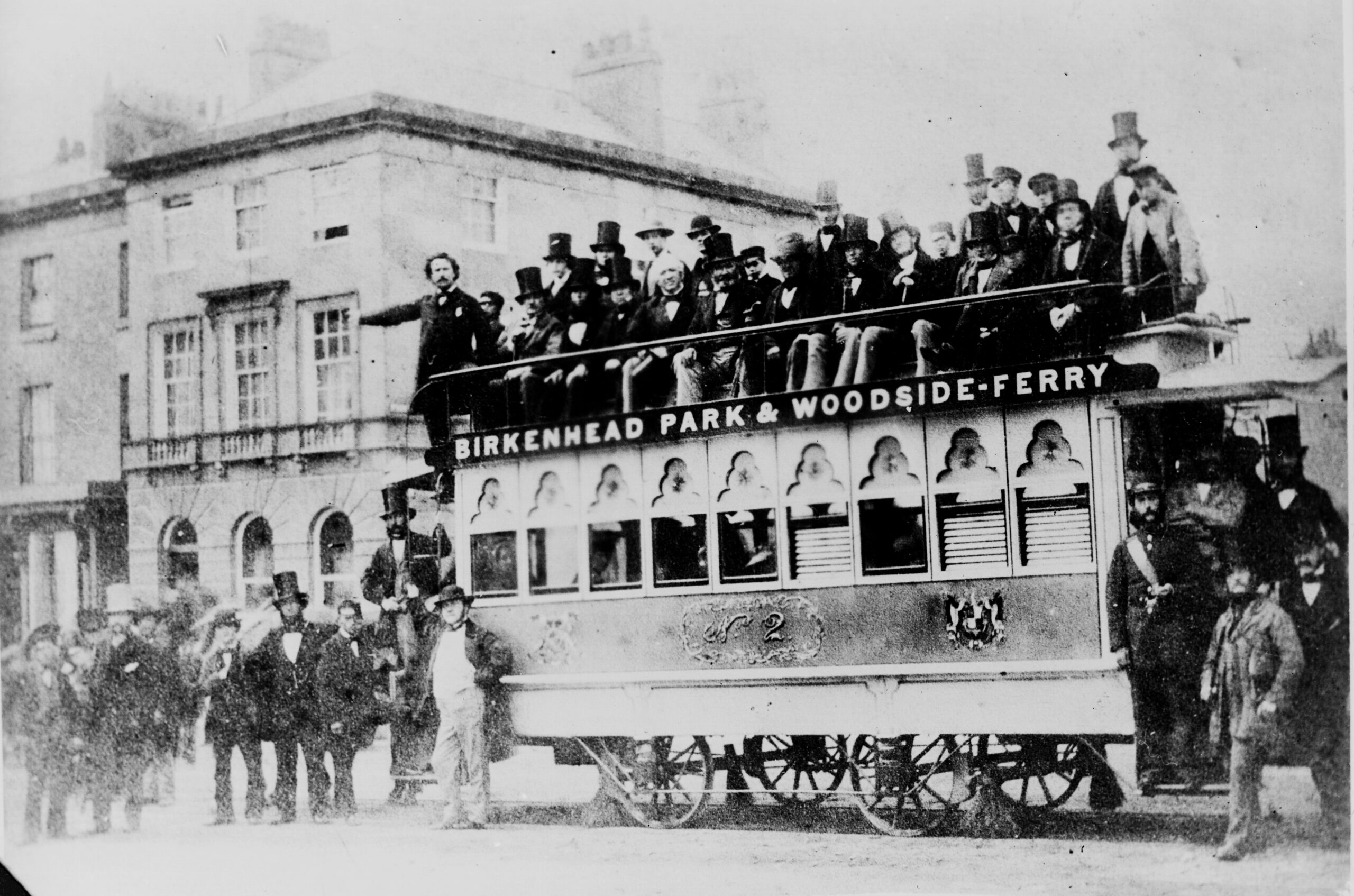
G.F. Train (top deck, left) inaugurating Britain’s first street tramway service outside the Woodside Hotel in Birkenhead on 30th August 1860. Photograph: TMS archive.
Birkenhead 20 was one of 44 tramcars ordered by the Corporation to operate the tramway when services commenced on 4th February 1901. The trams were built by local manufacturers G.F. Milnes & Co. at their Birkenhead factory, which was also the location of the first tramcar factory in the country.
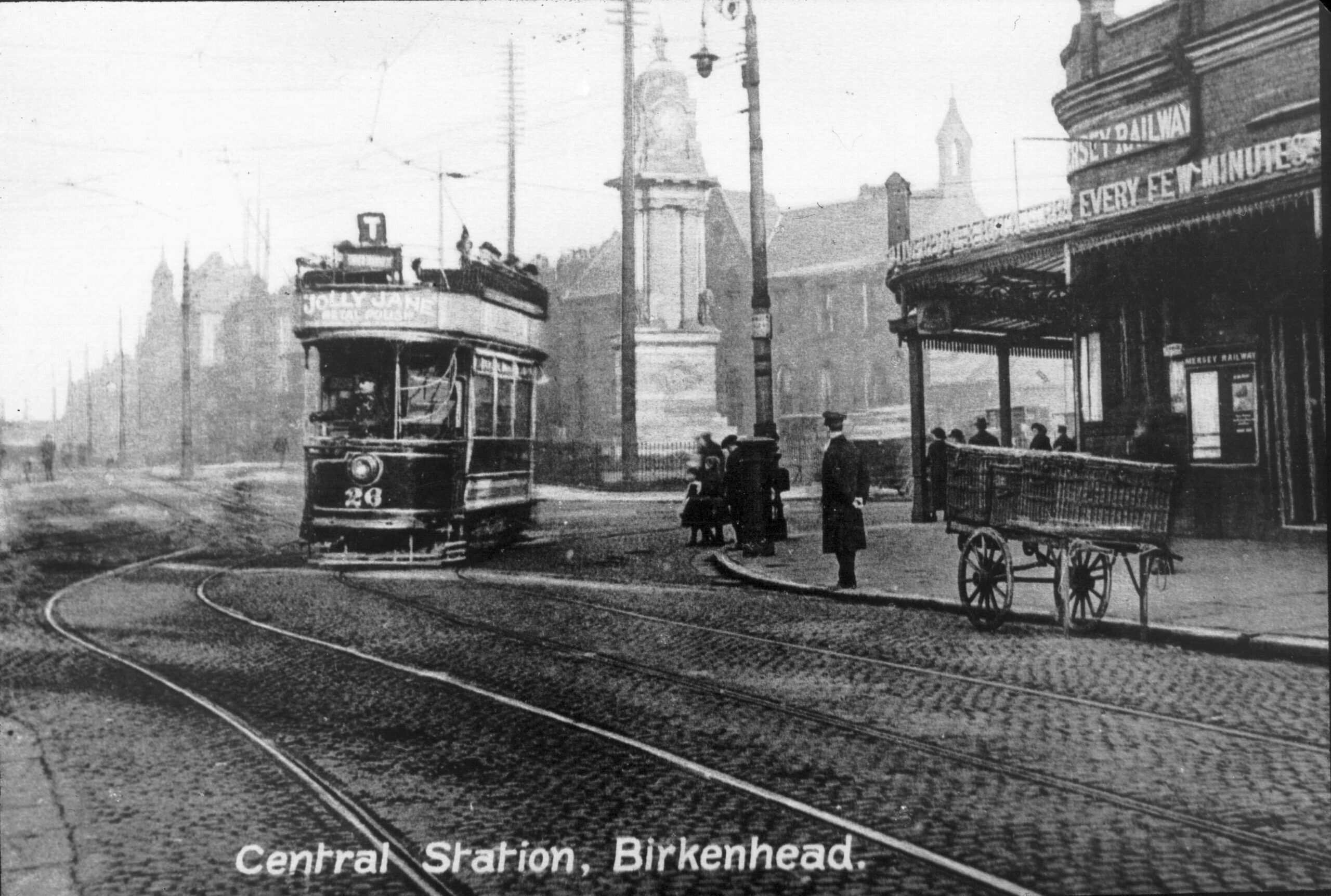
Open-topped Birkenhead Corporation tramcar no. 26 photographed at Central Station, Birkenhead. Date and photographer unknown. Photograph: TMS archive.
Originally built as an open-topped double deck tramcar, No. 20 was subsequently fitted with a Bellamy-type short top-cover (around 1911), which provided protection for upper deck passengers while leaving the balconies still exposed to the elements. The actual cover applied to No. 20 and several of its sister cars was manufactured by Brush to a Milnes Voss design. Interestingly, the timber for the roof covers was obtained from trees growing in Birkenhead’s parks.
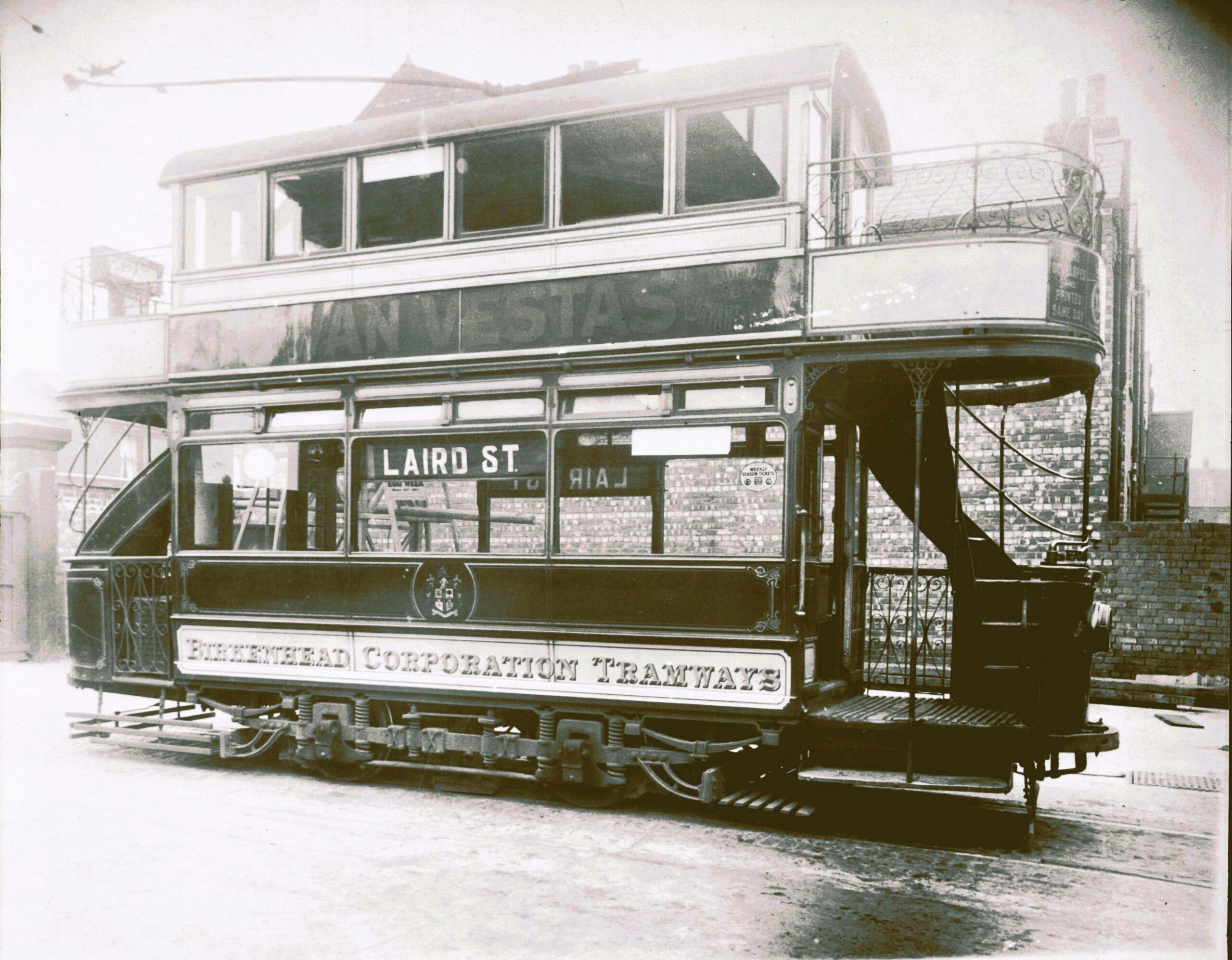
Unknown car fitted with a “Bellamy-stye” roof cover, photographed at Laird St. depot, circa 1911. Photograph: TMS archive.
This was one of a number of transitional designs that helped pave the way for fully enclosed double deck tramcars that began to appear before the first world war. However, No. 20 is believed to have retained its Bellamy-style roof until it was withdrawn in 1937, becoming one of the last survivors of the fleet. By the time Birkenhead tramway ran its final service on 17th July 1937 most of its original routes had already been abandoned between 1931 and 1935.
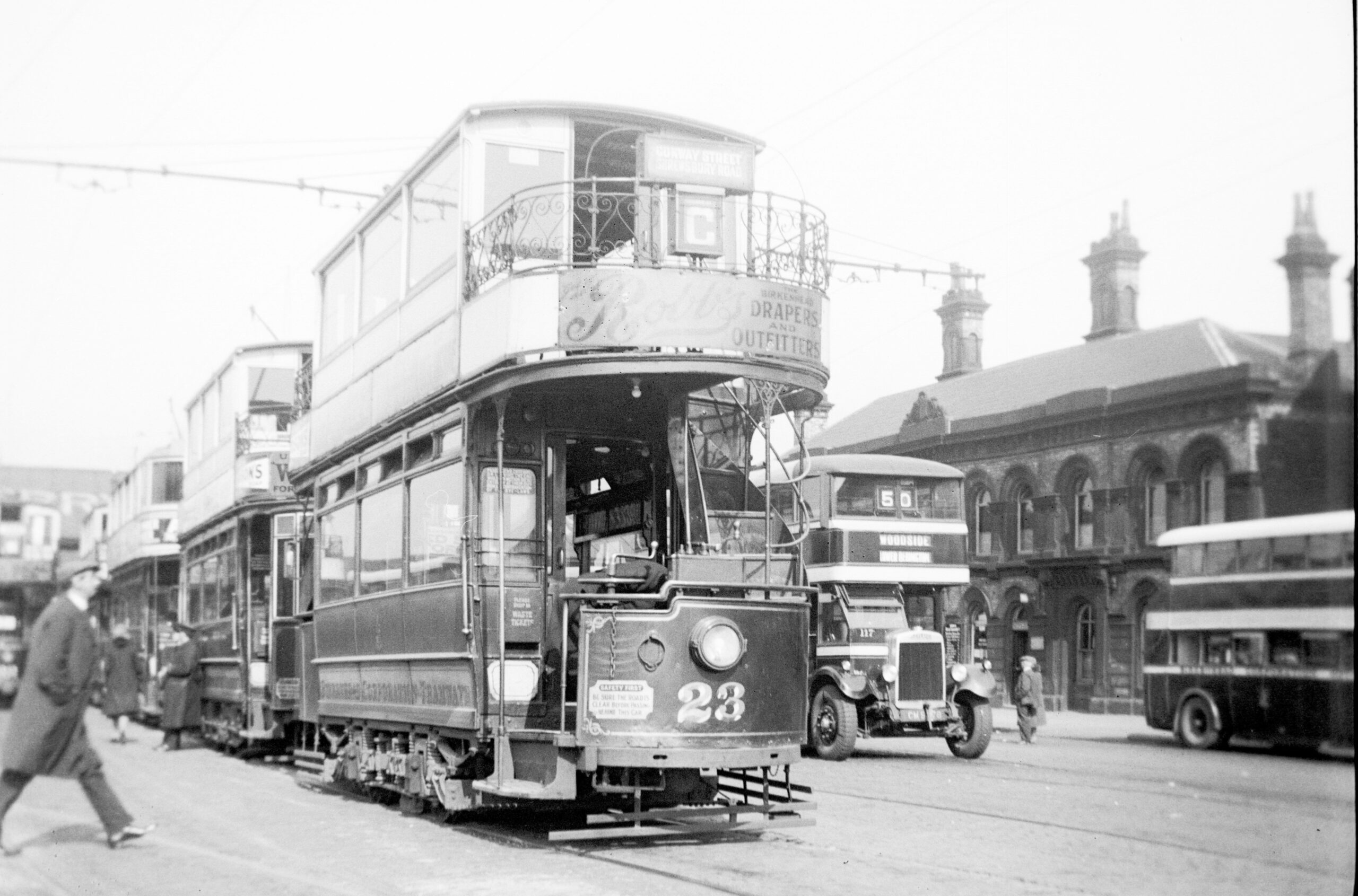
Sister car no. 23 photographed at Woodside Ferry terminus by M.J. O’ Connor; date unknown. Photograph: TMS archive.
Following its withdrawal, the body of the tramcar was sold and became a fishermen’s shelter on the banks of the River Dee. [Coincidentally, a similar fate befell Dundee & District Tramways’ steam tram trailer no. 21, which is also in the collection]. There it remained for 46 years until it was spotted by members of the Merseyside Tramway Preservation Society, who swapped it for a replacement shed before embarking on a lengthy restoration programme in 1983 with the aim of returning it to its original open-topped condition.
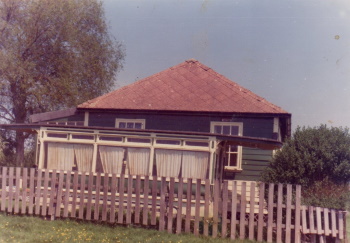
Body of Birkenhead 20 before it was taken into preservation. Photographed on 28th May 1978; courtesy of MTPS.
The ambitious project began in a hangar at nearby Speke Airport and involved the acquisition of various replacement parts including a Brill truck, which was sourced from Barcelona, controllers from Oporto and a trolley pole that came from Blackpool. It also involved several changes of location, including Princes Dock in Liverpool and the original Pacific Road premises of the Wirral Transport Museum. The restoration was completed by 2nd April 1999 when, on Good Friday, Birkenhead 20 became part of the operational fleet on the Wirral Tramway that had been established as a heritage attraction in 1995. Indeed, the half-mile tramway ran on part of George Francis Train’s original 1860 route.
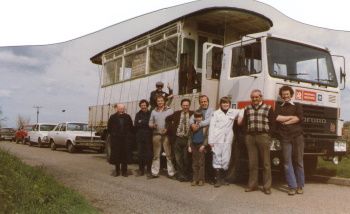
The remains of Birkenhead 20 on the back of a lorry at Farndon on the banks of the River Dee. Photograph courtesy of MPTS.
In addition to its regular service duties, the tramcar has also put in guest appearances at Beamish, where it took part in the museum’s Great Northern Steam Fair between 12th and 15th April 2012, and also Blackpool for an extended loan between July 2017 and November 2018.
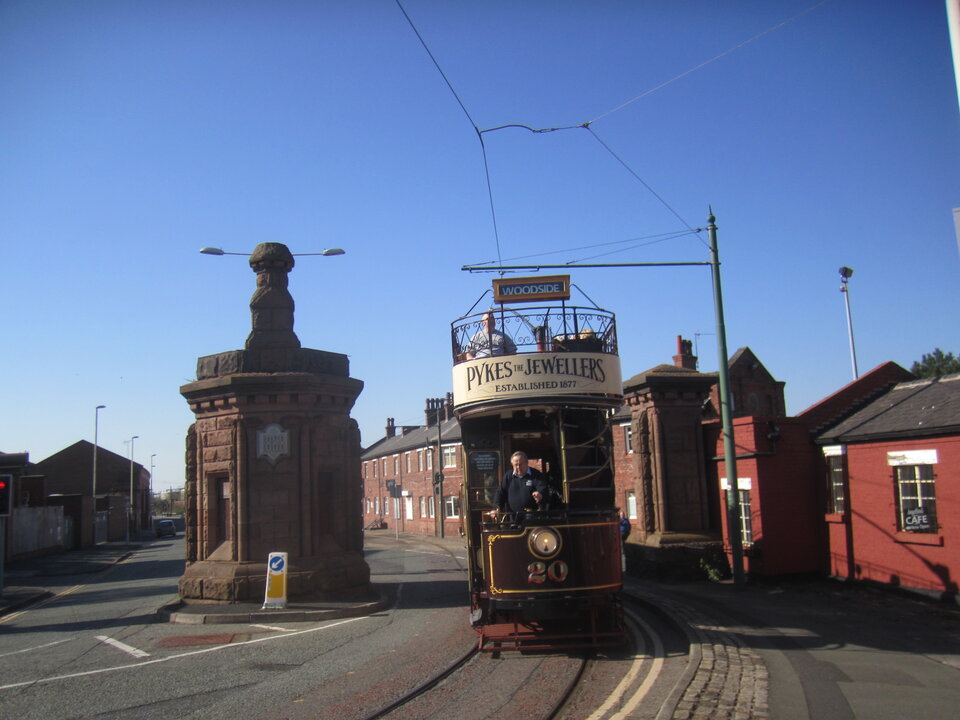
Birkenhead 20 passing through the old dock gates at the end of Shore Road on the Wirral Tramway on 18th April 2015. Photograph: Jim Dignan
Despite its undoubted historical significance, the Wirral Tramway has unfortunately endured a somewhat precarious existence as a result of successive rounds of financial cuts that have afflicted Wirral Borough Council since it first established the attraction with the aid of European funding in 1995. Indeed, it was first threatened with closure in 2009, when both Museum and Tramway were initially put up for sale and a proposed sale to Merseytravel fell through after protracted negotiations.
A rescue plan was eventually agreed that involved the operation and management of the facility being undertaken from January 2014 by volunteers from the Merseyside Tramway Preservation Society on behalf of the Council as part of a proposed asset transfer arrangement. A major refurbishment of the museum subsequently took place over a six-month period that ended on 21st July 2018. However, a further round of council funding cuts sadly resulted in both tramway and museum being closed once more in April 2023 with custodianship and management of the facility being transferred from the MTPS to Big Heritage, a not-for-profit social enterprise company.
This coincided with an inspection carried out by the Office of Road and Rail which resulted in a requirement to complete an extensive programme of work to address a number of health and safety and related issues, in addition to the major restructuring of the museum itself that Big Heritage is undertaking. Consequently, several vehicles have had to be rehomed, either temporarily or permanently, some of which belonged to the MTPS. They included three tramcars with strong links to the Merseyside area, one of which is Birkenhead 20.
Following extensive deliberations and conversations with interested parties during autumn 2024, the MTPS very generously donated all three trams to the Tramway Museum Society, where they will join Liverpool 869 – another tramcar that was rescued and preserved by the MPTS with further subsequent restoration being undertaken by the TMS at Crich.
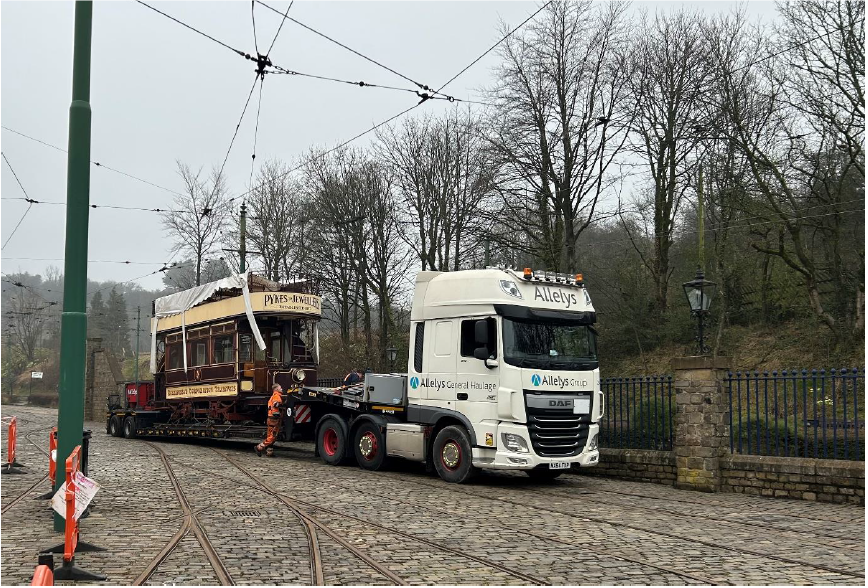
Birkenhead 20 arriving at Crich on 20th March 2025.
With its impeccable pedigree, and Birkenhead’s historical links stretching back to the dawn of Britain’s tramway era, Birkenhead 20 makes a worthy and very welcome addition to the Museum’s tramcar collection.
In addition to Liverpool 869, the museum also holds an extensive collection of books relating to the tramways of the Merseyside region, including Birkenhead’s, together with an original rectangular metal timetable board belonging to Birkenhead Corporation Tramways, dating back to May 1904.
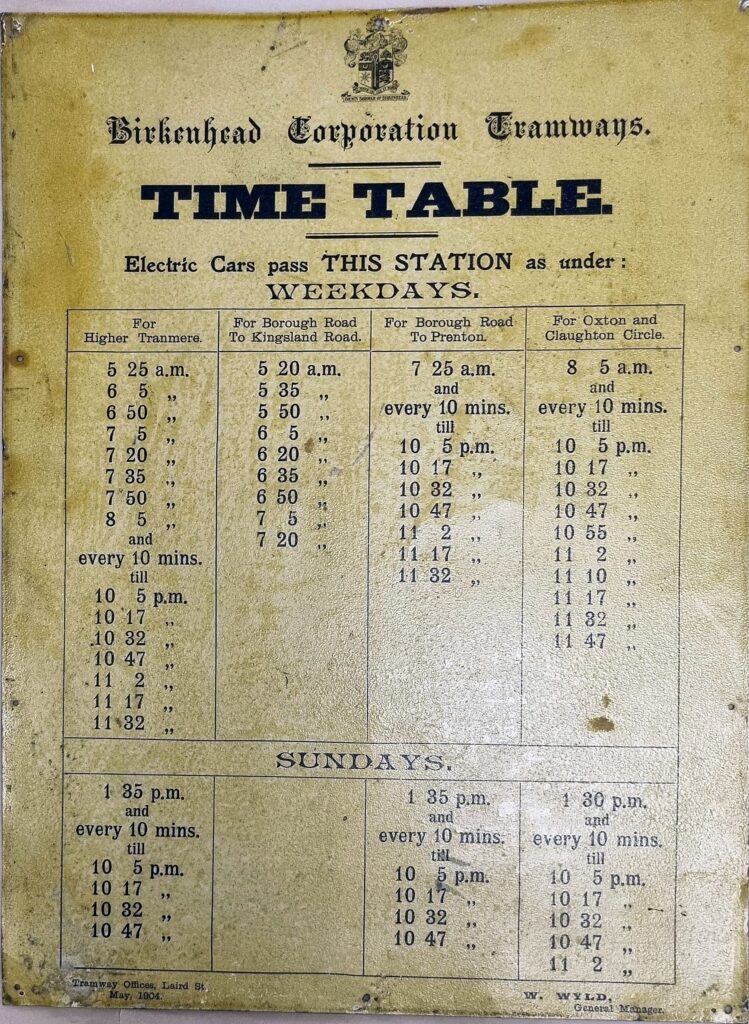
Birkenhead Corporation Tramways Timetable/Waybill board from 1904
Specification
- Type of tram
- Open-topped double deck bogie electric passenger tram
- Livery
- Maroon with pale cream rocker panels and upper works
- Seating capacity
- 55 (22 inside; 33 outside)
- Date built
- 1901
- Date entered service
- Second half of 1901
- Manufacturer of body
- G.F. Milne & Co., Birkenhead
- Manufacturer of truck
- Originally Peckham 9A cantilever extension 4-wheel trucks. Some, including No. 20, were replaced by Brill 21E trucks in 1920.
- Gauge
- 4’ 8½ “
- Motor
- 2x BTH GE 52 25hp
- Controller
- BTH B3 controllers. Many, again including No. 20, were replaced with BTH 510 controllers between 1923 and 1925
- Current collector
- Trolley Pole
- Modification
Fitted with Bellamy top covers circa 1911. Trucks replaced in 1920. Controllers replaced between 1923 and 1925.
- Withdrawn from service
1937
- Subsequent history
Sold and body ended up as fishermen’s hut by the River Dee
- Restoration history
Taken into preservation in April 1983; moved to Speke airport hangar; moved to Princes Dock, Liverpool, June 1985; moved to Pacific Road premises, 1990. Restoration completed by 2/4/1999.
- Current status
- Restored as open-topped double deck car in operational condition
- Date started operating at Crich
- N/A
- Total mileage covered at Crich
- N/A
- Current location
- Depots
- Future plans
Following its arrival at the Tramway Museum the tramcar will be assessed in order to ascertain any work that might need to be undertaken before it is able to join the operational fleet at Crich.
- 1901 – 1937Fully operational on original tramway
- 1937 – 1983Converted to fishermen’s shelter
- 1983 – 1999Undergoing restoration in various Merseyside locations
- 1999 – 2023 Operational at the Wirral Transport Museum with short-term visits to Beamish and Blackpool
- 2023 – 2025In storage at the Wirral Transport Museum
- 2025Crich Tramway Museum
